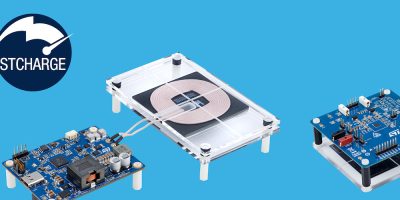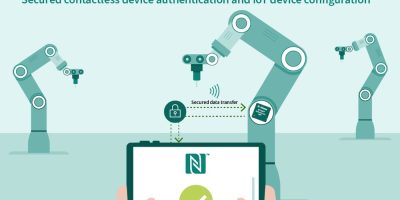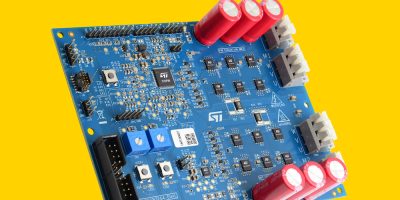ST has introduced a 50W, Qi-compatible transmitter and receiver combination to accelerate development of wireless charging for high-power applications such as medical and industrial equipment, home appliances, and computer peripherals.
Using ST’s new wireless-charging solution, innovators can leverage the convenience and speed of wireless charging in applications that demand a higher power and shorter charging interval. These applications include vacuum cleaners, cordless power tools, drones and other mobile robots, medical drug delivery devices, portable ultrasound systems, stage-lighting and mobile lighting, printers, and scanners. Free from cables, connectors, and complex docking arrangements, these products can become simpler, more affordable, and more robust.
The STEVAL-WBC2TX50 transmitter board is capable of delivering up to 50W of output power using the ST Super Charge (STSC) protocol. STSC is ST’s proprietary protocol for wireless charging at a faster rate than the standard protocols used with smartphones and similar devices, allowing quicker recharging of larger batteries. The board also supports the Qi 1.3 5W Baseline Power Profile (BPP) and 15W Extended Power Profile (EPP). The main component on-board is ST’s STWBC2-HP transmitter system-in-package, which combines an STM32G071 Arm Cortex-M0 microcontroller and an application-specific front end. The front end provides signal conditioning and frequency control, a high-resolution PWM generator to drive the transmitter, and operates with any DC voltage from 4.1V to 24V. It also contains MOSFET gate drivers and a D+/D- interface for USB Power Delivery. In addition, the STWBC2-HP SiP can work with ST’s STSAFE-A110 secure element to provide Qi authentication.
The STEVAL-WLC98RX receiver board is built to handle up to 50W charging power, to safely accommodate the full STSC capability as well as BPP and EPP charging. Features include support for Adaptive Rectifier Configuration (ARC), which extends charging distance by up to 50% to allow lower-cost coils and more flexible configurations. Accurate voltage and current measurement for Foreign Object Detection (FOD), thermal management, and system protection are also provided. This board uses ST’s STWLC98 wireless power receiver IC, which contains a Cortex-M3 core and an integrated high efficiency synchronous-rectifier power stage with programmable output voltage up to 20V.
Dedicated software tools, ST’s STSW-WPSTUDIO for the STEVAL-WLC98RX and STSW-WBC2STUDIO for the STEVAL-WBC2TX50 are available to modify the configuration parameters, tailoring the operation of the device to the needs of customised applications. A comprehensive set of design documents is also available to assist development.







